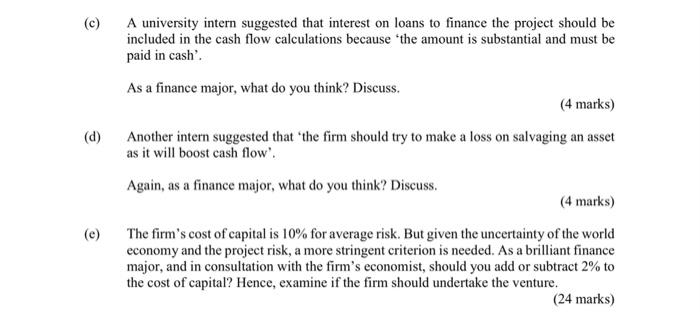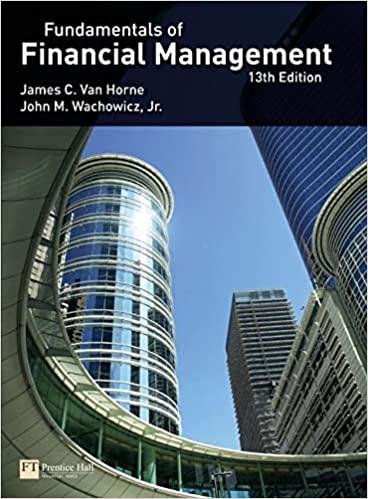Question 3 Iconichip Inc. is considering investing in a new equipment to produce the latest nano chips for electronic devices. It requires an initial outlay of $4.5 million as equipment cost and an additional $500,000 as installation cost. The firm hired a specialist firm to do an encompassing feasibility study which cost $200,000. The equipment will be depreciated over 5 years of its useful life on a straight-line basis. Additional spending of $300,000 on net working capital at the start of the project will be necessary, although it can be recovered in the equipment's last productive year. By conservative estimates, the project will produce sales of $6 million every year for 5 years, with $1.5 million as costs each year. The tax rate is 20%. It must be noted that the equipment can be sold as scrap for 5% of the initial equipment cost at the end of its productive life. It must also be noted that to encourage high-tech investments, the authority has offered capital investment credit based on 20% of the installation cost for new equipment deductible upon installation (c) (d) A university intern suggested that interest on loans to finance the project should be included in the cash flow calculations because the amount is substantial and must be paid in cash As a finance major, what do you think? Discuss. (4 marks) Another intern suggested that the firm should try to make a loss on salvaging an asset as it will boost cash flow'. Again, as a finance major, what do you think? Discuss. (4 marks) The firm's cost of capital is 10% for average risk. But given the uncertainty of the world economy and the project risk, a more stringent criterion is needed. As a brilliant finance major, and in consultation with the firm's economist, should you add or subtract 2% to the cost of capital? Hence, examine if the firm should undertake the venture. (24 marks) (e) Question 3 Iconichip Inc. is considering investing in a new equipment to produce the latest nano chips for electronic devices. It requires an initial outlay of $4.5 million as equipment cost and an additional $500,000 as installation cost. The firm hired a specialist firm to do an encompassing feasibility study which cost $200,000. The equipment will be depreciated over 5 years of its useful life on a straight-line basis. Additional spending of $300,000 on net working capital at the start of the project will be necessary, although it can be recovered in the equipment's last productive year. By conservative estimates, the project will produce sales of $6 million every year for 5 years, with $1.5 million as costs each year. The tax rate is 20%. It must be noted that the equipment can be sold as scrap for 5% of the initial equipment cost at the end of its productive life. It must also be noted that to encourage high-tech investments, the authority has offered capital investment credit based on 20% of the installation cost for new equipment deductible upon installation (c) (d) A university intern suggested that interest on loans to finance the project should be included in the cash flow calculations because the amount is substantial and must be paid in cash As a finance major, what do you think? Discuss. (4 marks) Another intern suggested that the firm should try to make a loss on salvaging an asset as it will boost cash flow'. Again, as a finance major, what do you think? Discuss. (4 marks) The firm's cost of capital is 10% for average risk. But given the uncertainty of the world economy and the project risk, a more stringent criterion is needed. As a brilliant finance major, and in consultation with the firm's economist, should you add or subtract 2% to the cost of capital? Hence, examine if the firm should undertake the venture. (24 marks) (e)








